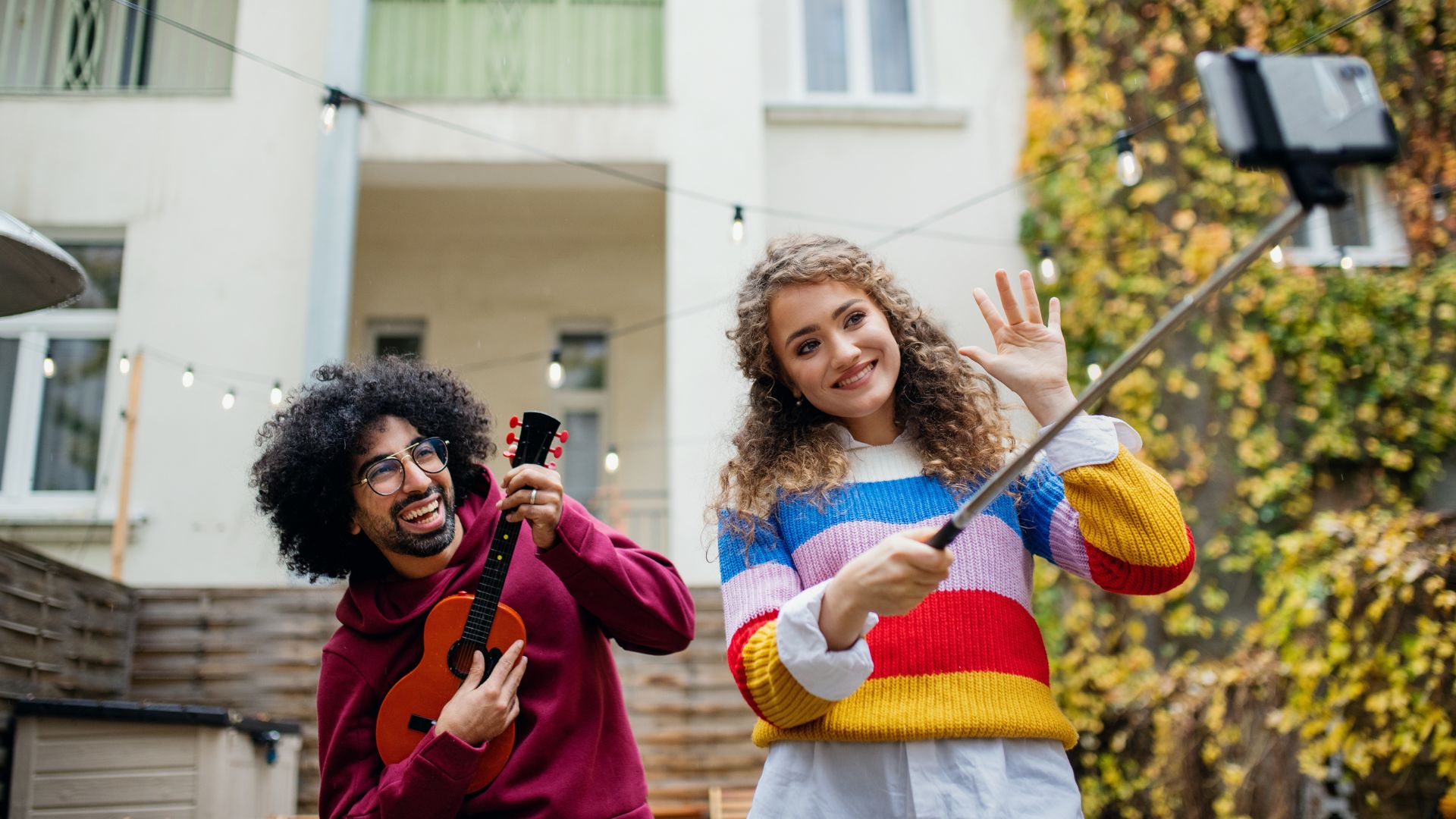Sign-Up For The NeuroGym Newsletter And Join The Innercise Revolution!
We value your privacy and would never spam you.
Featured
For decades, commercials on the television and radio were considered the best way to advertise a product to consumers.
But as more and more of the world is connected online, video marketing can get your message out to far more consumers than its predecessors ever could.
Like any form of advertising campaign, video marketing costs money. If you’re trying to get a business off the ground, how can you ensure you appeal to the greatest number of potential customers possible?
By using neuroscience, of course! Neuro-marketing is a cutting-edge field exploring how to use neuroscience to effectively market products. In this article, we’ll be looking through the current top trends in video marketing and the science behind them.
What’s the most interesting thing the science behind these trends reveals? If you want your advertising to work, you also need to play to the viewer’s needs and fears.
Want to learn more about how understanding the subconscious mind can help you connect with customers? Join us at the live Brainathon virtual training event this weekend. Book now!

Do you habitually scroll through your favorite social media via your smartphone, rather than on a computer? Chances are the answer is yes!
Over 3.6 billion people are counted among the world’s mobile social media users—that’s a lot of potential consumers! Video marketing is also an effective way of advertising through mobile. Besides getting ads in front of countless sets of eyes, why do video marketing trends favor social media apps?
Social media brings you content in bite-sized pieces. If you’re not interested in something, you can quickly scroll past it. Over time, the algorithm learns what you like and further personalizes the “feed” of posts you’re shown.
Watching something fun or interesting releases dopamine, a neurotransmitter closely linked to anticipation and motivation. If you’ve ever been excited for something and then let down, that disappointed feeling is caused by your brain not getting the dopamine it expected.
On the other hand, you might feel an urge to buy a product if an advertisement convinces you it’ll improve your life—that’s the craving for dopamine at work! And now, algorithmically curated social media platforms target video marketing ads straight to the people who’d be most interested.
But you can’t just put any old video online, you have to convince the viewers that they need your product if you want your video marketing to succeed! The challenge is that your video still needs to grab and hold the viewer’s attention while competing against thousands of other posts—you need to find the balance.
Social media and video marketing go together like peanut butter and jelly! We know video marketing on mobile social media is all the rage right now: but what kind of social media is on top?

The “short video” format of social media was introduced to the world through the mobile app Vine, which operated from 2012 until it shut down in 2017. Even though it was only available for five years, Vine changed online video sharing—and video marketing—forever.
Short videos are sometimes just a few seconds long and play automatically as the viewer scrolls through them. Nowadays, the wildly popular app TikTok is the best place by far to share short videos, but every major social media platform has added them to their design!
Short videos are the second-biggest trend in video marketing right now because they play to our brain wiring!
Since humans are social beings, we feel a need to connect with our peers. Dopamine helps motivate us to satisfy that need, and this guides our behavior online!
Not only that, but since dopamine stimulates the habit-forming nucleus accumbens, a region in the brain’s reward complex, our need for connection is reinforced over time.
If we see a video we like on a social media platform, we might decide to share it with a friend. Getting “likes” or other positive reactions from sharing a video causes the release of dopamine and other neurotransmitters like serotonin, which has been described as the “happy” or “feel-good” chemical.
Your video needs to play to people’s desire to be accepted, and their fear of being rejected.
So, how’s a savvy neuro-marketer (that’s you) to take advantage of short video trends while keeping the science in mind?
Try these tips for video marketing:

Most major social media apps now let users broadcast videos live, and platforms like Twitch, entirely dedicated to livestreaming, rose sharply in popularity during the pandemic. Livestreaming lets a content creator interact with their viewers in real time, and this is what neuro-marketers capitalize on.
People need social interaction to be well. Livestreams scratch that itch much better than regular videos, and have led to a fascinating phenomenon called parasocial bonding, or parasocial relationships.
Have you ever felt genuine affection for your favorite celebrity, as if you actually knew them? When a celebrity interacts with their fanbase, our brains can respond as if they were talking directly to us, secreting the dopamine we crave, and pushing us to seek them out again later!
Furthermore, brain regions associated with the reward system like the ventral striatum become more active in response to positive social—or parasocial—interactions. A person with a parasocial bond to a livestreamer can, as a result, start to trust them like they would a friend. Advice from someone we trust can really affect how we make decisions.
From this, you can see why livestreaming is one of this year’s top video marketing trends! But once again, livestreaming only works because it plays into a core human drive for social connection.
Curious to know more about how you can play to your audience’s subconscious to market your business? What are you waiting for? This weekend’s Brainathon is the event for you! Sign up NOW!
No matter what format it’s delivered in, video marketing needs to convince viewers that it can fill a need in their lives—otherwise, it needs to play to their fears. In the sections below, we explain why video marketers can’t rely on these trends alone to market their product.

You can post a short, punchy, eye-catching video to social media apps explaining your product, but remember, people don’t buy things just for the sake of buying them. The advertisement should play into the viewer’s needs if it’s going to get their attention.
The advertisement needs to convince the viewer that the product will solve some problem in their life. Let’s say you invented an electric orange-peeler. You’d have to convince people that they need it, that it’s an inconvenience to peel an orange by hand, if you wanted anyone to buy it!
Other ads go a completely different route by appealing to our need for social belonging and approval.
Social interaction was very important to the survival of prehistoric humans because no one could make it alone. From that time, our brains evolved, rewarding group acceptance and positive social interactions with the release of serotonin and dopamine.
Video marketers can use their ads to suggest that cool, likable people use their product, increasing the odds that more people will join in. Advertisers call this the bandwagon effect.
Our brains are also hardwired to respond instinctively to fear, and video marketers with an understanding of neuroscience know how to use this to their advantage. Human brains are hardwired to keep us safe. We feel fear so that we will act to rectify an unsafe situation.
Whether it’s running away, hiding, or trying to neutralize a threat, we don’t react to fear rationally. In a survival situation, instinct takes over. Advertisers play to this by suggesting the viewer is in some danger that the product can rectify.
A great example would be an ad for a virtual private network, or VPN, app starting off with shocking statistics about internet security, and suggesting that the only way the viewer can protect their privacy is to purchase and download the app right now.
Just as our brains are hardwired to crave social approval, we are instinctively afraid of social rejection. In the time of early humans, we lived in small, close-knit groups that relied on one another to survive—and getting kicked from the group would not work in your favor.
Being labeled as unlikable or uncool is still a fear many adults have, and when an advertisement suggests there’s something we can do to improve our chances of acceptance, the instinct to belong kicks in for a lot of people! If an advertisement implies cool, likable people use their product, viewers want to buy it to feel like part of that group!
While old-school TV commercials or newspaper ads can play into our needs and fears, the top three current trends in video marketing really demonstrate how much advertising has changed. In just a few seconds, or over a web livestream, you need to be able to convince as many people as possible that your product will improve their lives.
When advertisers think about how their product could solve viewers’ needs and fears, they are thinking about connecting with their target audience on a subconscious level. An understanding of neuroscience is your best tool in designing the perfect video advertisement!
Want to learn more about how you can use neuroscience to your advantage in business? Join us at the live virtual Brainathon this weekend to hear it from experts in the field! Register NOW!

NeuroGym Team: NeuroGym’s Team of experts consists of neuroscientists, researchers, and staff who are enthusiasts in their fields. The team is committed to making a difference in the lives of others by sharing the latest scientific findings to help you change your life by understanding and using the mindset, skill set and action set to change your brain.
We value your privacy and would never spam you.